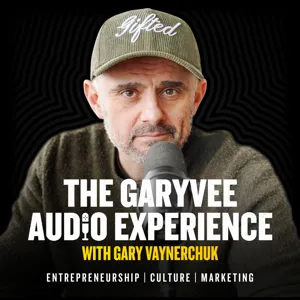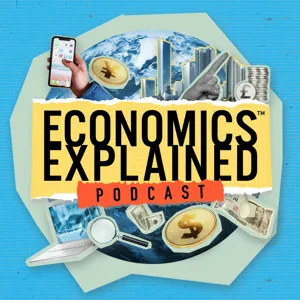Podcast Summary
Alice Neel: A painter's resistance: Alice Neel was a painter who defied traditional portraiture and often struggled to sell her work. Working through trauma, she continued to create portraits that captured the essence and history of her subjects.
Alice Neel, a painter known for her portrayal of people as history and resistance to traditional portraiture, painted Dr. James Dineen, a primary care internist at Mass General Hospital, in her backyard. Neel's life was plagued with trauma, but she continued to paint constantly, often struggling to sell her work. When she began experiencing spells and losing consciousness, Dineen examined her and discovered she had no pulse. Neel passed away shortly after. While not well-known, Neel's portraits continue to be celebrated for capturing the essence and history of her subjects.
Alice Neel's Last Masterpiece: Alice Neel, a renowned artist, painted Dr. James Dineen, a doctor she cured one of his patients, in her backyard, focusing on his eyes and hands. As her reputation grew, the value of her works skyrocketed, leading to auctions of her paintings for millions of dollars.
Alice Neel's relationship with Dr. James Dineen began when she cured his patient with a pacemaker, leading to her painting Dineen in her backyard and creating one of her last works before she passed. The painting of Dineen has stood the test of time and remains in his bedroom, showing Neel's focus on eyes and hands. Neel's reputation and the value of her works have increased drastically since her death, leading to a recent auction of one of her paintings for $2.5 million. This series explores the hidden side of the art market and the factors that drive the value of artworks.
The Challenges of the Contemporary Art Market: Elitism, Exclusion, and Unregulated Practices: The contemporary art market is dominated by a select few and excludes the average person. The market lacks regulation, leading to dishonest practices. Digital disruptors and transparent solutions are needed to make the art market more accessible and fair.
The contemporary art market has become an elitist, top-heavy industry that favors a handful of top artists and leaves the public largely excluded. While high prices may create an incentive for artworks to be preserved, they also make it incredibly difficult for the average person to own a piece of original art. The market is largely unregulated and subject to lies and monkey business. The overcrowding of the market with digital disruptors and inexperienced investors only adds to the problem. To change the market, disruptors need to focus on providing easier access to art and creating a more democratic and transparent market.
The Disruption of the Exclusive Art World Model: The art industry needs to be more transparent and accessible through modern technology to increase sales and engage buyers, creating a more inclusive marketplace.
The art world has historically relied on a model of exclusivity, but this is no longer sustainable in today's market. In order to increase sales and democratize the industry, there needs to be greater price transparency and accessibility, especially on the primary market. Technology and the availability of information offer a path towards disrupting the outdated model and creating a more inclusive marketplace. As the Covid pandemic has shown, it's possible to engage buyers and conduct transactions without relying solely on physical interactions.
Online Art Sales and the Shift Towards Inclusivity: The pandemic has driven the need for alternative approaches in the art world, resulting in a shift towards a more inclusive and accessible art-buying culture through online marketplaces like David Zwirner's Platform.
Online art sales have set a record in 2020, contributing to 25% of the total art market. This indicates a shift towards a more inclusive art-buying culture. The pandemic has driven the need for alternative approaches in the art world like David Zwirner's Platform, an online marketplace that connects independent galleries to a larger audience. Platform offers a curated selection of works at relatively low prices, catering to a broader buying public, with anyone allowed to purchase the art for sale. This new approach to art sales represents a significant shift away from the traditional gallery model, indicating that the future of the art world will be more inclusive and accessible to a wider range of buyers.
An Innovative Marketplace for Young Galleries and Legitimate Art Investment Platforms: Platform provides a user-friendly space for young galleries to showcase their work and potentially expand their audience while reducing the art industry's carbon footprint. Meanwhile, legitimate investing platforms like Masterworks offer individuals new opportunities to invest in art.
Platform is an innovative marketplace that offers young galleries a much more user-friendly way to present their work and reach larger audiences, with the added benefit of reducing the industry's carbon footprint. Despite skepticism from archrivals, the goal is not to steal artists from smaller galleries, but rather to create a space for them to showcase their work and potentially expand their client base. However, the art market has increasingly become an 'asset class' with a significant percentage of artworks being held in storage or used for money laundering and tax evasion. Nonetheless, legitimate investing platforms such as Masterworks are emerging to provide new opportunities for individuals to invest in art.
Masterworks: Securitizing Expensive Art Pieces for Retail Investors: Masterworks allows retail investors to diversify their portfolios with valuable paintings and prioritizes the physical well-being of each piece in a fine-art storage facility. The rise of N.F.T.s may democratize the art world.
Masterworks is securitizing expensive art pieces for retail investors in an attempt to shift from the billionaire class to the investor class. The company focuses on paintings that are worth $1 to $30 million in value and acquires them from auction houses, dealers, and individual collectors. While most investors lack experience in the art market, they invest in Masterworks to diversify their portfolios with alternative investments. The paintings are stored in a fine-art storage facility where their physical well-being is a top priority. The majority of sold art pieces around the world currently sit in warehouses, but the rise of N.F.T.s could democratize the art world by allowing anyone to showcase digital art from anywhere.
The Rise of N.F.T. Mania in the Art Industry: Digital art is gaining recognition as a legitimate investment sector with the sale of an N.F.T. digital artwork for over $69 million at Christie's auction house, marking a new form of technology disruption in the art market.
Technology disruption of the art market has taken a new form with the sale of a digital artwork for over $69 million at Christie’s auction house, making it the third-highest price ever fetched at auction for a living artist. The artwork, Everydays: The First 5,000 Days by Mike Winkelman, also known as Beeple, is a collage of thousands of images posted online every day for more than a decade and was created via the blockchain as an N.F.T or non-fungible token. This sale highlights the rise of N.F.T. mania, which involves the exchange, buying, and selling of unique digital assets such as art, tweets, and video clips, legitimizing digital art as an investment-worthy sector in the art industry.
The Rise of N.F.T.s: A New Era in Digital Art: N.F.T.s have opened up a new market for digital art, attracting tech-savvy buyers who are unfamiliar with the traditional art market. They have the potential to democratize art by making it more accessible and recognized.
Digital art, including N.F.T.s, has become a significant player in the art market, with 12 percent of all art sales in the first half of 2021 being attributed to these technologies. Unlike traditional art collectors, buyers in the N.F.T. market tend to be tech-savvy individuals who aren't familiar with the traditional art market. The rise in N.F.T. sales has created a demand for spending cryptocurrency wealth, but currently, there are few options outside of the N.F.T. market. N.F.T.s have the potential to democratize art by allowing it to be shown anywhere by anybody, promoting the recognition of digital art that was previously irrelevant. While some experts doubt that digital artwork will rival traditional paintings, museums such as MoMA are exploring how they can incorporate N.F.T.s into their collections.
The Revolutionary Potential of N.F.T.s in the Art Market: N.F.T.s can democratize the art market by increasing accessibility, creating new communities, and giving artists more control. They can also eliminate the need for physical certificates and disrupt the traditional gallery system, making the art market ripe for innovation.
N.F.T.s have the potential to revolutionize the art market by making collections more accessible to the public, creating new communities of users, and giving artists more control over the commercialization of their work. Ethereum's programmable smart contract allows for the creation of digital certificates of authenticity, which eliminates the need for physical certificates that can be lost. This empowers artists and disrupts the traditional gallery system. While N.F.T.s can generate capital, their cultural impact is just as important as their marketability. The art market has long-standing frictions that make it ripe for disruption, and N.F.T.s may be the solution.
The Rise of the Asian Art Market and Its Impact on Artists of Color and Women: The Asian art market has emerged as a vital player, driving renewed interest in artists from China, Japan, and Korea. However, affordability and accessibility for collectors remain challenging, and owning art is often a personal, emotional experience.
The art market has gone through a major geographic disruption in recent times, with Asia emerging as a significant player. The thirst for masterworks among Asian audiences has led to a renewed interest in important artists from countries like China, Japan, and Korea. The market has also seen historical corrections for women and artists of color, reflecting larger cultural sentiments. The shift in focus towards Asian artists is a positive development. However, the art market continues to face challenges related to affordability and accessibility for collectors. At the same time, for some, owning a piece of art is an emotional, contemplative experience that goes beyond commercial considerations.
Alice Neel's Legacy and the Intrinsic Value of Art: Alice Neel broke barriers by painting those who were overlooked by society. The value of art goes beyond money, as seen in James Dineen's desire to honor Neel's memory through charity instead of personal gain.
Alice Neel was a pioneer who embraced people who were poor and not famous. She believed that art was more fun than being a psychiatrist and loved painting people torn to shreds by the rat race in New York. Her paintings have sold for millions of dollars, but for James Dineen, the value of her last painting is in the memory and experience it holds. He hopes that his six children would sell it and donate the proceeds to a charity that Alice would embrace rather than using it for personal gain. James Dineen's perspective challenges the notion that the art market prioritizes commercial value over its intrinsic value and memory.


